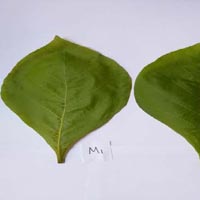 Smart Citations
Smart CitationsSee how this article has been cited at scite.ai
scite shows how a scientific paper has been cited by providing the context of the citation, a classification describing whether it supports, mentions, or contrasts the cited claim, and a label indicating in which section the citation was made.
Water content, resorption of N and P, and the growth of teak Tectona grandis L.f. seedlings on four types of growing media under drought stress
Growing media that contain organic materials can provide nutrients and water for plants. This study analyzed the availability and effects of nutrients and water, N and P resorption, and growth of teak seedlings under drought stress. The growing medium was made from ultisol soil (M1), ultisol soil with husk charcoal (M2), ultisol soil with chicken manure (M3), and ultisol soil with compost (M4), then planted with teak seeds. Maintenance was conducted by field capacity watering for 30 days. Teak seedlings were treated with drought stress for 90 days. Based on the analysis, growing media total N ranged from 0.19 to 0.28%, total P ranged from 0.10 to 0.17%, and water ranged from 11.40 to 16.20%. Teak seedling leaves contain N nutrient ranging from 0.34 to 0.95 % and P nutrient ranging from 0.04 to 0.16 %. The N resorption ability of teak seedlings ranged from 26 to 31%, and P resorption was around 20 to 25 %. The height growth of teak seedlings ranged from 80 to 115cm, the stem diameter from 1.4 to 1.8cm, the leaf area from 630 to 650cm2, and the thickness of the leaves from 545 to 462µm. Growing media made from ultisol soil and chicken manure (M3) produced the best water content, N and P resorption, and the growth of teak seedlings after 3 days of drought stress.
Downloads
How to Cite
PAGEPress has chosen to apply the Creative Commons Attribution NonCommercial 4.0 International License (CC BY-NC 4.0) to all manuscripts to be published.

 https://doi.org/10.4081/jbr.2022.9715
https://doi.org/10.4081/jbr.2022.9715





